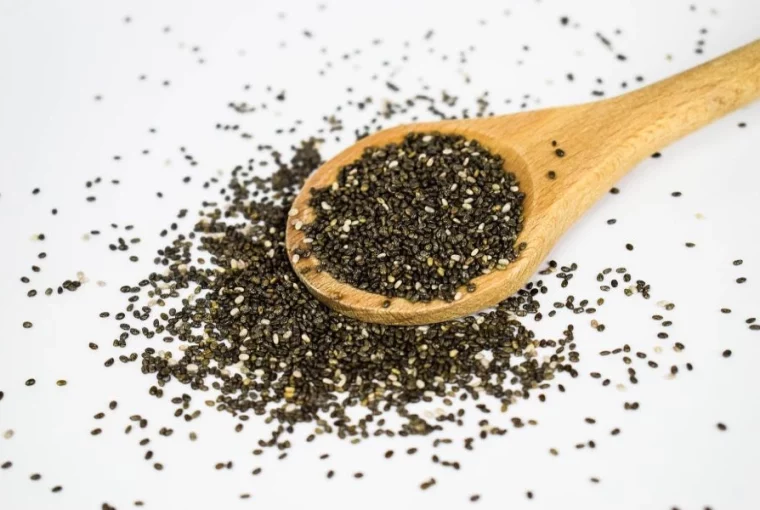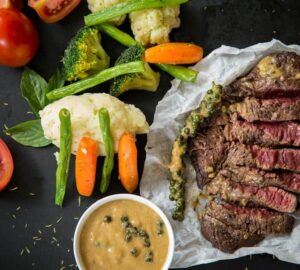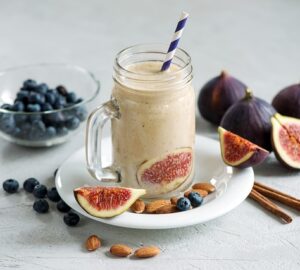When we think about protein there are a few standard sources like meat, eggs, nuts, and tofu. But there are many other protein sources out there. Chicago’s best weight loss expert did a research for you and found 20 great and underrated sources of protein that you come across nearly every day but didn’t know are rich in protein:
1. Seaweed
Seaweed is an overlooked source of protein because it’s quite hard to get to one cup of it. But one cup of seaweed can contain up to 9 grams of protein. It has a different taste than what we’re used to so if you don’t like it you can blend it into dips and sauces.
2. Parmesan Cheese
In a piece of cheese that is the size of a pair of dice, which is not even that much cheese, there are 8 grams of protein. For an added dose of protein, load up your pasta and pizza with parmesan.
3. Spirulina
Spirulina is a type of algae and one tablespoon contains 4 grams of protein. You can throw a couple of tablespoons of spirulina into your smoothies. You won’t feel the taste of it but will get more protein.
4. Artichoke Hearts
A cup of artichoke hearts contains 4 g of protein, but it is tricky to peel it and get to the heart. It is equally good to use frozen, jarred, or canned artichoke hearts. You can use them in pasta or make a puree by blending them with Greek yogurt, garlic, olive oil, and lemon juice.
5. Chia seeds
Because of their fiber content, many people love chia seeds. But what they might not know is that chia contains 4 grams of protein per serving. By sprinkling some chia seeds on your oatmeal, you add some protein to your starchy breakfast. You can also make chia pudding which is a great healthy dessert.
6. Green peas
It may sound shocking but there are 8 grams of protein per cup of green peas. Not only do they have such a high level of proteins, but they are also super cheap and available year-round. Plus, they are easy to incorporate into your daily diet; you can add them to pasta, salad, or stir fry.
7. Wheat Berries
Wheat berries are unprocessed, whole wheat kernels and in every quarter cup, you can find 6 grams of protein. You can incorporate it into your diet the same way you use rice, quinoa, or pasta.
8. Hemp Seeds
A serving of hemp seeds is three tablespoons. A serving of hemp seeds contains 10 g of protein. They may seem less versatile than other protein sources but they can be easily tossed into homemade salad dressings, smoothies, and granolas.
9. Cottage Cheese
To take advantage of cottage cheese and its 35 grams of protein you’ll need one and a quarter cups of it. It can be used as a substitute for ricotta in lasagna or you can swirl some into your morning oatmeal; it has a mild taste so you won’t even feel it.
10. Nutritional yeast
It can be used as a spice and it’s great for vegans and vegetarians. Nutritional yeast contains 9 grams of protein per serving of two tablespoons. It can be used as a substitute for parmesan cheese as it has a cheesy, nutty, and salty taste.
11. Broccoli
A cup of broccoli contains 3 grams of protein. It might not seem like a lot but if you add broccoli to a stir fry with quinoa, peas, and spinach you’ll already be halfway through your daily allowance of protein.
12. Quinoa
Any whole grains will give you a protein-boosting meal but especially quinoa. It gives you 8 grams of protein along with many minerals. Quinoa makes a great base for veggie bowls but you can also cook it like oatmeal topped with fresh fruit, nuts, and honey. You can also add cooked quinoa into pancake batter, muffins, or quick bread batter.
13. Greek Yogurt
Greek yogurt is a great source of protein because a little more than half a cup of it contains 18 grams of protein which makes it a great post-workout snack. So opt for greek yogurt over regular one when you can.
14. Goat Cheese
Not only is goat cheese a good source of calcium but it also has a surprisingly good amount of protein – 6 grams per ounce of cheese which is as much as a large egg. It is great for an adult version of PB&J – spread goat cheese on whole-wheat bread with jam over it.
15. Wild rice
A common substitute for white rice is brown rice because not many people know about wild rice. Wild rice requires a bit more time to cook but have patience because each serving of wild rice contains 6 grams of protein.
16. Whole-Grain Pasta
A cup of cooked whole-grain pasta has 7.5 grams of protein. You will never look at your plate full of whole-grain pasta as a big plate of carbs again. You can use it with any type of sauce or add it to steamed or fried vegetables and make noodles.
17. Sweet potatoes
We all know potatoes are starch, but sweet potatoes are also a source of protein. They have as much protein as a half cup of low-fat milk. You can use them in smoothies – blend them with banana, dairy or plant milk, cashew butter, and pumpkin pie spice.
18. Leafy Greens
Spinach is known as muscle food. A serving of a pre-cooked cup of spinach contains 5 grams of protein. And other greens aren’t far behind. With leafy greens, you can do anything, use them in soups, blend them into sauces, or steam them as a side dish to your meals.
19. Pumpkin Seeds
These crunchy, delicious, and rich in protein make a perfect snack. Or you can mix it with rice and dried cherries.
20. Beans
Many of us underestimate the power of beans, but a cup of beans has more protein than any other vegetable and that number is 8 grams. Frozen ones are as good as freshly picked ones. There are many ways to use beans, but this may not be the one you thought of. Puree tahini, garlic, lemon juice, and green beans, and make amazing green hummus.




